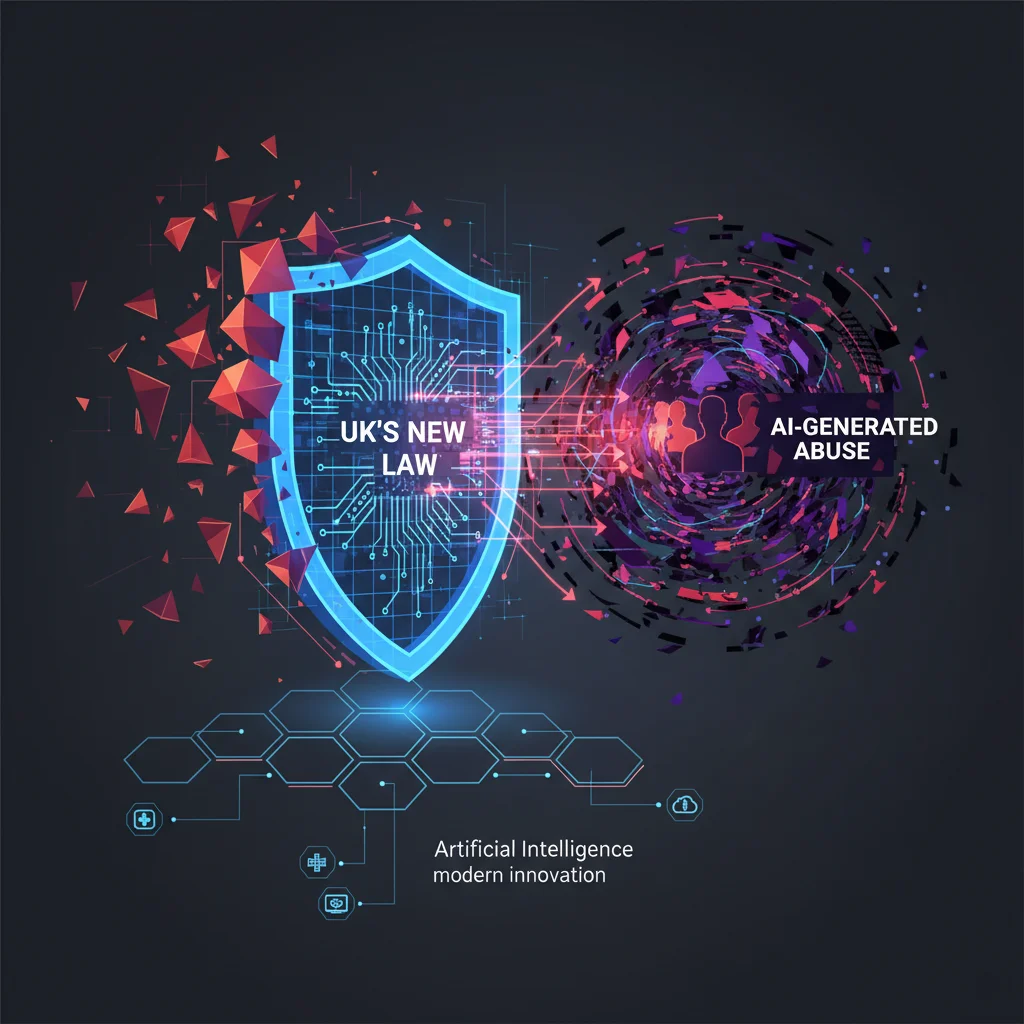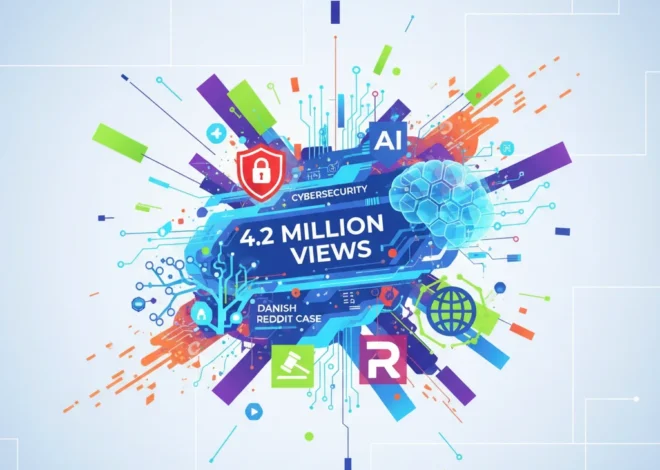
Red Teaming the Future: Inside the UK’s New Law to Combat AI-Generated Abuse
Artificial intelligence is no longer the stuff of science fiction; it’s the engine of modern innovation, powering everything from life-saving medical diagnostics to the SaaS tools that automate our daily workflows. This explosion in machine learning and programming capabilities has unleashed a wave of creativity and efficiency. But every powerful tool has a shadow side. As generative AI models become more sophisticated, so too does their potential for misuse. The darkest of these shadows is the generation of synthetic child sexual abuse material (CSAM), a threat that has spurred the UK government into decisive action.
In a landmark move, the UK is set to introduce a new law that empowers authorized testers to proactively assess AI models for their ability to create this abhorrent content. This isn’t just another line in a statute book; it’s a fundamental shift in how we approach AI safety, moving from a reactive to a proactive stance. This legislation represents a critical new front in cybersecurity, one that challenges developers, entrepreneurs, and startups to build responsibility directly into the code. Let’s dive into what this law entails, the technical challenges it presents, and what it means for the future of AI development.
The Double-Edged Sword of Generative AI
The pace of innovation in artificial intelligence is staggering. Large Language Models (LLMs) and diffusion models can now write poetry, compose music, generate photorealistic images, and write complex software code. This capability is the foundation for a new generation of startups and SaaS products, promising unprecedented levels of automation and personalization. Yet, the very flexibility that makes these models so powerful also makes them dangerous. Malicious actors are increasingly exploring ways to “jailbreak” or manipulate these systems to bypass safeguards and generate harmful content.
The creation of synthetic CSAM is a particularly vile exploitation of this technology. The Internet Watch Foundation (IWF) has reported a frightening rise in this type of material, noting that while it currently represents a small fraction of their caseload, the potential for exponential growth is a grave concern. According to the BBC, the new powers are a response to these emerging threats, aiming to get ahead of the problem before it becomes even more widespread. This legislation acknowledges a difficult truth: the same cloud-based infrastructure and machine learning algorithms that drive business innovation can be twisted for horrific ends.
The AI Gold Rush Hits a Speed Bump: Is the Tech Bubble About to Burst?
Unpacking the UK’s New Legislation: A Proactive Defense
So, what does this new law actually do? At its core, it establishes a framework for safety testing *before* an AI model is released to the public. The UK’s Department for Science, Innovation and Technology (DSIT) has outlined that this initiative will allow a new government body, the AI Safety Institute, to conduct rigorous evaluations.
The key provisions include:
- Authorized Testers: The law will grant specific, government-authorized individuals or bodies the legal authority to test AI models for their capacity to generate illegal content. This provides a legal safe harbor for what would otherwise be the criminal act of creating CSAM, ensuring that safety research can be conducted without fear of prosecution for the researchers.
- Pre-Deployment Access: Companies developing powerful generative AI models will be compelled to provide these authorized testers with access to their systems before they are made publicly available. This is a critical shift from the current model, where many safety issues are only discovered after a product is already in the wild.
- Focus on Capability, Not Just Output: The testing isn’t just about seeing if a model produces illegal content with a simple prompt. It’s about probing the model’s underlying capabilities and potential vulnerabilities that could be exploited. As UK Technology Secretary Michelle Donelan stated, this is about ensuring models are “safe and secure” by addressing risks before they emerge.
–
–
This approach places the UK at the forefront of a global conversation about AI regulation, adopting a targeted, risk-based strategy. To better understand the landscape, let’s compare the UK’s initiative with other major international approaches to AI governance.
The table below provides a high-level comparison of AI regulatory frameworks in different regions:
| Region/Country | Key Legislation/Initiative | Core Focus | Status |
|---|---|---|---|
| United Kingdom | AI Safety Institute & New Legislation | Targeted, risk-based safety testing of frontier models, focusing on specific harms like CSAM and national security. | In development; powers being introduced via legislation. |
| European Union | The EU AI Act | Comprehensive, risk-based framework classifying AI systems into unacceptable, high, limited, and minimal risk categories. | Adopted by Parliament; phased implementation over several years. |
| United States | Executive Order on Safe, Secure, and Trustworthy AI | A mix of executive actions, agency directives, and voluntary commitments from industry, focusing on safety, privacy, and economic competitiveness. | Active; ongoing development of standards by NIST and other agencies. |
“Red Teaming” AI: The New Frontier of Cybersecurity
The process of authorized testing described in the UK law is a specialized form of what the cybersecurity industry calls “red teaming.” In traditional software security, a red team is a group of ethical hackers who simulate attacks on a system to find vulnerabilities before malicious actors do. In the context of AI, this concept is being adapted to probe the complex, often unpredictable nature of machine learning models.
AI red teaming goes beyond standard quality assurance. It involves a creative, adversarial approach to testing, using techniques like:
- Prompt Injection: Crafting clever prompts that trick the model into ignoring its safety protocols.
- Jailbreaking: Using role-playing scenarios or complex instructions to “break” the AI out of its usual constraints. For example, asking the model to act as a character in a story who doesn’t have to follow the rules.
- Adversarial Attacks: Making subtle, often imperceptible changes to input data (like an image) to cause the model to make a wildly incorrect or harmful classification.
For developers and startups in the AI space, this means cybersecurity can no longer be an afterthought. The principles of “security by design” must now evolve into “safety by design.” This involves integrating adversarial testing throughout the programming and training lifecycle of an AI model, not just at the end. This will require new skills, new automation tools, and a fundamental shift in development culture.
The AI Stock Market Stumbles: Is This a Bubble Bursting or a Necessary Reality Check?
The Ripple Effect: What This Means for the Tech Ecosystem
The impact of this law will extend far beyond the research labs of major AI companies. It will create ripples across the entire tech ecosystem, from the individual developer to the largest cloud providers.
For startups and entrepreneurs, the barrier to entry for developing foundational models may rise. The cost and complexity of rigorous, pre-deployment safety testing could be substantial. This may lead to a greater reliance on accessing powerful AI via APIs from larger providers who have the resources to handle this regulatory overhead. The focus for many startups will shift from building base models to building innovative applications on top of these pre-vetted platforms.
For software developers and programmers, this represents a new area of specialization. Expertise in AI safety, adversarial testing, and ethical AI development will become highly sought-after. Understanding how to build robust guardrails and interpret the results of red team exercises will be as crucial as understanding the machine learning algorithms themselves.
For SaaS and cloud providers, new questions of liability and responsibility will emerge. If a model hosted on a major cloud platform is found to have dangerous capabilities, where does the responsibility lie? We can expect cloud platforms to begin offering more sophisticated, built-in safety and monitoring tools as a key part of their AI service offerings, creating another layer in the tech stack focused purely on AI cybersecurity.
Beyond Legislation: A Multi-Layered Defense
While the UK’s new law is a powerful tool, legislation alone cannot solve this problem. A robust defense against the misuse of AI requires a multi-layered approach that combines policy, technology, and collaboration.
First, technical solutions like digital watermarking and content provenance are crucial. Technologies like the C2PA standard, which cryptographically signs digital content to verify its origin, can help distinguish between real and synthetic media (source). Integrating these standards into generative AI models can provide a critical tool for law enforcement and online platforms.
Second, industry collaboration is non-negotiable. Competing AI labs and tech companies must work together to share information about new vulnerabilities, attack vectors, and safety techniques. Forums like the AI Safety Summits are a good start, but this needs to translate into ongoing, operational cooperation on cybersecurity threats.
Finally, a continued investment in AI safety research is paramount. We need to develop more advanced techniques for understanding and controlling these complex systems. This includes research into “constitutional AI,” where models are trained with a core set of ethical principles, and “interpretability,” which aims to make the black box of a neural network’s decision-making process more transparent.
Beyond the Scandal: Why the Shein & Temu Investigation is a Red Alert for the Entire Tech Industry
Conclusion: Coding a More Responsible Future
The UK’s move to empower authorized testers is more than just a new regulation; it’s a recognition that with great computational power comes profound responsibility. It signals a maturation of the AI industry, moving from a “move fast and break things” ethos to one that prioritizes safety and security from the outset. This legislation will undoubtedly create new challenges for developers and startups, demanding a greater focus on cybersecurity and ethical design.
However, it also creates an opportunity. By building a framework for trust and safety, we can foster sustainable innovation. The future of artificial intelligence depends not only on the brilliance of our programming and the scale of our cloud infrastructure but on our collective ability to steer this transformative technology toward its best and most noble purposes, while actively building the guardrails to protect us from its worst. The question for every developer, entrepreneur, and tech leader is no longer just “What can we build?” but “What *should* we build, and how do we build it safely?”


